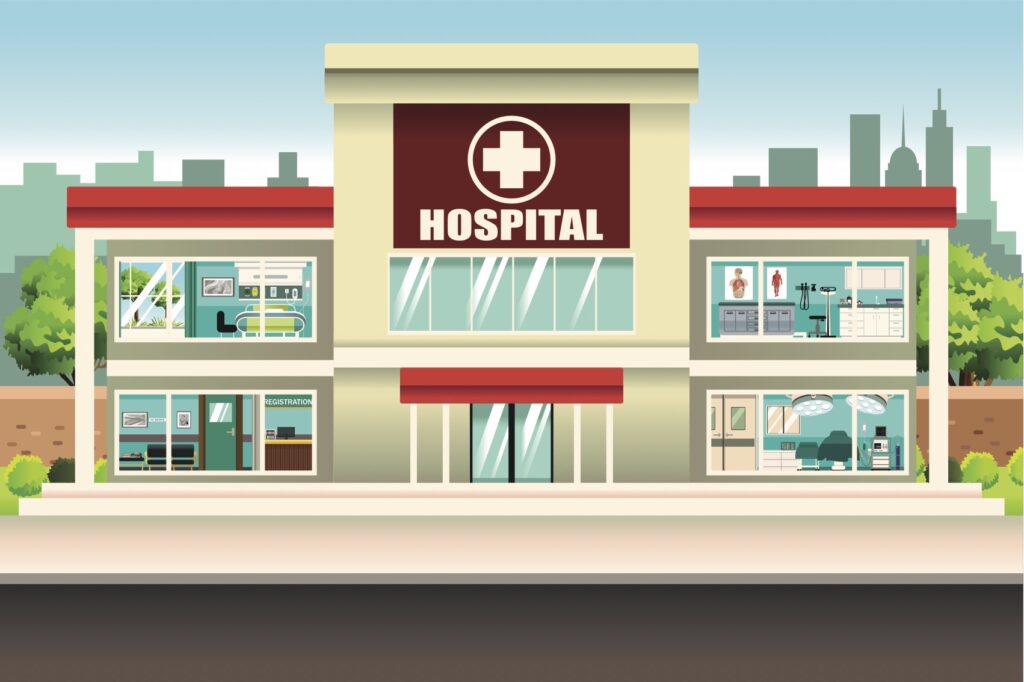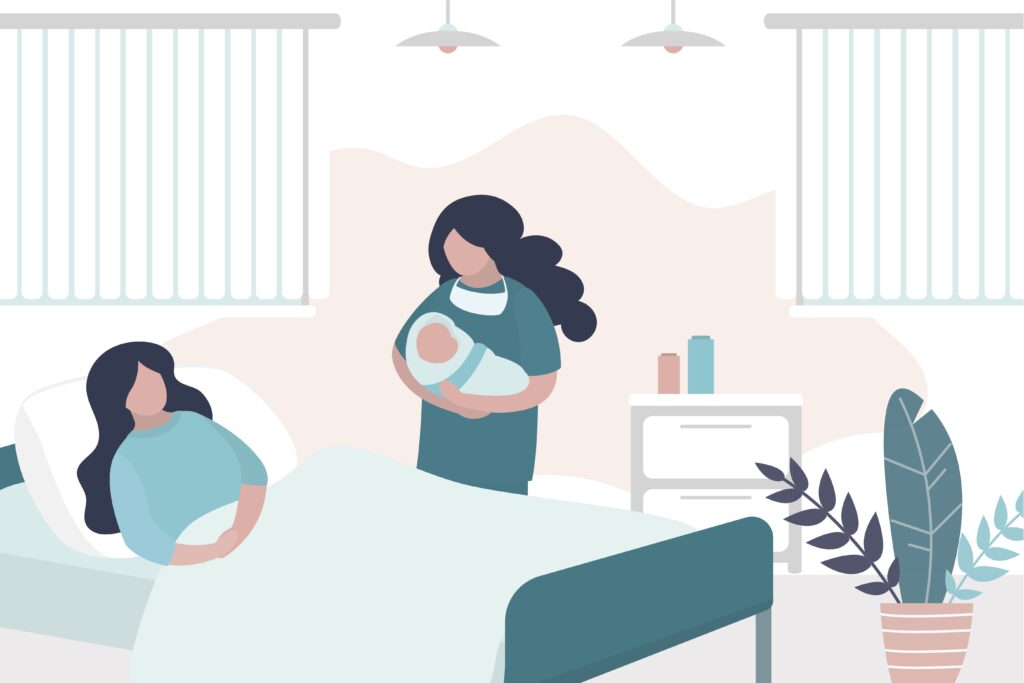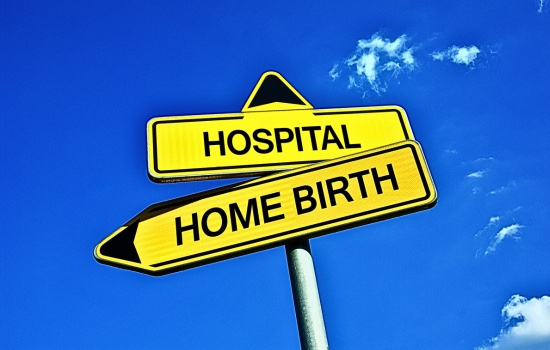Not only are there different types of healthcare providers who deliver babies (think: OB/GYNs, midwives, and family medicine doctors), there are different birthing location options, too.
These Include:
- Hospitals.
- Birthing Centers.
- Your Home.
Get Wise(r) About These Different Birthing Locations Below…
Hospitals: The Tried & True “Traditional” Route (98.8% of Deliveries in the U.S. Occur in Hospitals).

As You Can See From the Stat Above, Hospitals are (By Far) the Most Popular Birthing Location in the U.S.
If you’ve already found an OB/GYN or a family medicine doctor to deliver your baby, your delivery hospital will probably be chosen for you. This is because most OB/GYNs and family medicine doctors are affiliated with a specific hospital and do all of their deliveries there.
That Being Said, Here are a Few Questions to Ask When Evaluating Your Delivery Hospital:
- How Far Away From Home Is It? Location is key. Pick a reputable hospital that’s nearby (and a provider who delivers there).
- Is There a NICU on Site? This is a must for high-risk pregnancies and a bonus if you’re having a run-of-the-mill pregnancy.
- There are 4 different NICU “levels,” with Level 4 being the highest. (Translation: Level 4 NICUs can handle the most acute stuff).
- If no formal NICU is on the premises, ask whether neonatologists rotate through the hospital. If there are no neonatologists on hand, ask your provider where they transfer babies who need NICU-level care.
- Is There an Anesthesiologist (a Doctor Who Performs Epidurals) at the Hospital at All Times?
- Does the Hospital Have Private Rooms? If you like your privacy, ask if there are private rooms for your pre-delivery and post-delivery care. The actual delivery will, of course, be private. Most hospitals have private rooms, but they usually come at an additional cost.
- Is the Hospital a “Teaching Hospital” With Residents and Medical Students? If So, What Will Their Roles Be?
At teaching hospitals, residents (and medical students to a lesser degree) may participate in the delivery of your baby.- Residents are doctors in training who have varying degrees of experience, depending on which year of residency they’re in.
- Medical students don’t have any specialized training and are just learning the ropes.
- Both are heavily overseen by the attending (“boss”) doctors.
- Teaching hospitals can be great because a lot of deep-dive learning and research goes on within their walls. They also have several layers of oversight as a result of the different levels of training.
- That being said, some people think medical students and residents are kind of annoying and want to keep their medical circle small during the delivery.
PediaTip: Think about what type of person you are and what the best fit is for your family. You can always request not to have medical students or residents in the room at a teaching hospital, but some doctors (secretly) think this is diva behavior because it make things more complicated for them.
Birthing Centers (0.3% of Deliveries in the U.S. Take Place in Birthing Centers).

- Birthing centers are either free-standing or part of a hospital.
- They’re typically run by certified midwives or OB/GYNs.
- The goal of birthing centers is to provide a more “natural” childbirth experience.
PediaTip: If your chosen birthing center isn’t part of a hospital, make sure that an affiliated hospital is nearby in case your provider has to escalate care.
Home (Home Births Make Up 0.9% of Deliveries in the U.S.)

- In the U.S., roughly 35,000 women elect to deliver their babies at home each year.1
- Midwives typically assist with these home births.
- The majority of home births produce healthy babies, but if a complication arises (such as the need for an emergency C-section, which cannot be performed at home), time is of the essence and getting to a nearby hospital is key. If your heart is set on a home birth, pick an experienced midwife, and make sure that you have a well-thought-out backup plan in place.
A Word About “Water Births”

During a “water birth” the expectant Mom sits in a “birthing tub” filled with warm water either during the first part of labor (the contraction-part), the delivery, or both. Water births can occur at home, in a birthing center, or in a hospital.
Proponents of water births think this method creates a more “natural” transition into the world because the baby has been sitting in amniotic fluid for 9 months. Critics of water births, however, feel this mode of delivery creates unnecessary risks for the baby (think: infections, problems with temperature regulation, and inhaling water into the lungs – this last one is rare, though, because babies don’t typically take their first breath until they’re exposed to air).
What Does ACOG, the Guru of all Things Pregnancy-Related, Say About Water Births?
ACOG (the American College of Obstetricians and Gynecologists) says there’s not enough evidence to support the practice of delivering babies in water. The organization, therefore, recommends that birth “occur on land, not in water.”2 There is some research, however, that says sitting in water during the first part of labor (before the delivery of the baby) shortens labor and decreases the need for an epidural.
If you plan to have a water birth, talk to your healthcare provider about the process and make sure that you’re a good candidate for it. When the time comes, confirm that the birthing tub has been cleaned and disinfected.
The Bottom Line
Pick a birthing location that feel right for you. Do your research, ask questions, and be flexible.








